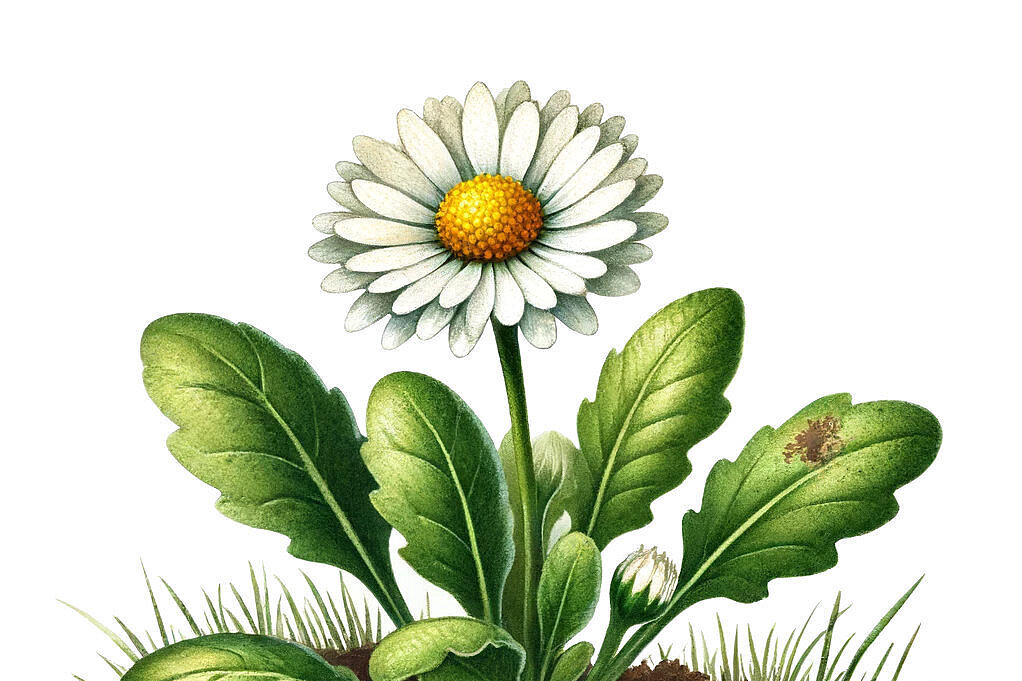Chrysanthemum

What is a chrysanthemum?
The chrysanthemum is a genus of plants in the composite family. There are over 200 species of chrysanthemum, which bloom in different colors and shapes. Most chrysanthemums originate from Asia, where they have been cultivated for thousands of years. In China, they are considered a symbol of longevity and happiness, while in Japan they are the national flower.
Chrysanthemums contain various active ingredients that can be beneficial to humans and animals. These include pyrethrins, which have an insect-repellent effect, flavonoids, which are antioxidant and anti-inflammatory, and essential oils, which have a calming and antibacterial effect.
How can chrysanthemum help my dog?
Chrysanthemum can help your dog in various ways. Firstly, it can serve as natural protection against fleas, ticks and other parasites. You can either spray your dog's coat with a spray made from chrysanthemum extract or put a collar with chrysanthemum flowers on it. This keeps the annoying pests away and is gentle on your dog's skin.
On the other hand, chrysanthemums can also help your dog with various ailments. For example, for gastrointestinal problems, skin irritations, allergies or stress. You can either make a tincture from chrysanthemum flowers or brew dried flowers as a tea. Then add a few drops or a teaspoon to your dog's food or water.
What are the disadvantages of chrysanthemum?
Although chrysanthemum is a natural plant, this does not mean that it is completely harmless. As with any remedy, you should always pay attention to the correct dosage and application and be aware of possible side effects.
Too much chrysanthemum can lead to symptoms of poisoning such as vomiting, diarrhea, tremors or convulsions. This is because some dogs are sensitive to pyrethrins. So if you notice that your dog is showing unusual symptoms after using chrysanthemums, you should consult a vet immediately.
It is also important to ensure that only pure chrysanthemum flowers and no other parts of the plant are used. The leaves and stems can be poisonous and cause irritation in the mouth or stomach. You should also not use chrysanthemums that have been treated with pesticides or other chemicals.
Chrysanthemum is a beautiful and useful plant for your dog. It can help him with various problems and protect him from parasites. But as with everything, less is more. Only use high-quality products made from chrysanthemum flowers and observe your dog after use.
If you notice any signs of hypersensitivity or poisoning in your dog, you should see your vet immediately. We are not a substitute for a vet, but we try to be as accurate as possible. Every dog reacts differently and we recommend you get a second opinion or consult your vet if in doubt.
Stay healthy and take good care of your four-legged friend!😊
Similar to Chrysanthemum
Marigold originally comes from the Mediterranean region and was already valued as a medicinal plant in the Middle Ages. It contains many active ingredients that have an anti-inflammatory,...
Chamomile is a plant from the composite family that is mainly found in Europe, Asia and Africa. It has white flowers with a yellow center that exude a pleasant fragrance. The flowers are dried and...
Lavender is a plant genus that belongs to the labiate family. There are around 30 different types of lavender, which differ in appearance, fragrance and ingredients. The best-known species is true...
The daisy (Bellis perennis) belongs to the daisy family and is a perennial plant that is common in Europe, Asia and North America. It has a short stem with a rosette of spatulate leaves and a flower...



